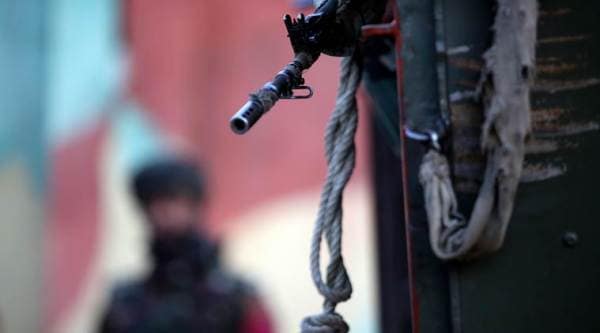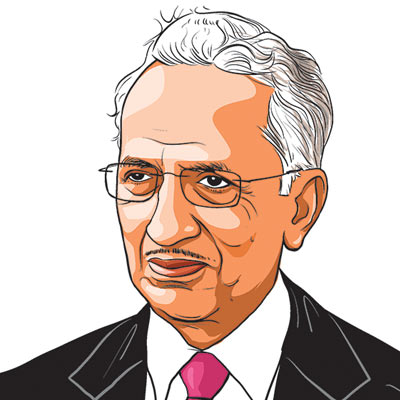Hold out an olive branch
Government today again holds upper hand vis a vis Naxals. It’s the best time to make peace

The trajectory of Maoist violence has been showing a downward trend (Express Photo/Praveen Khanna/File)
The Home Minister of India recently claimed that the challenge of Naxalism in the country is on its “last legs”. His assessment stems from the fact that the security forces have been achieving signal successes against the Maoists. Fifteen Maoists were killed in an encounter in the Konta area of Sukma district in Chhattisgarh on August 6. According to the South Asia Terrorism Portal, at least 122 Maoists have been killed across the country in the first six months of 2018. This is the highest number of fatalities suffered by Maoists over the same period during the last eight years. It is also a fact that the total area affected by Naxalism has shrunk to 90 districts of the country. The trajectory of Maoist violence has been showing a downward trend. A number of central committee and politburo members have been neutralised.
The government of India’s National Policy and Action Plan, with its emphasis on security and development, is definitely making an impact. Apart from the construction of roads, mobile towers, setting up of banks, post offices, Kendriya Vidyalayas, etc, the most significant achievement has been in poverty reduction. A recent study published in a Brookings blog says that by 2022, less than 3 per cent of Indians will be poor and that extreme poverty could be eliminated altogether by 2030.
The above trends are, no doubt, positive. It would, however, be naïve to think that we are about to see the end of Naxalism/Maoism in the country. If a historical overview were taken of the movement during the last more than 50 years, there were two occasions in the past when the government of India thought that the Naxal movement had been disintegrated. The split in the party, the joint army-police operations — ‘Operation Steeplechase’, as it was called — from July 1 to August 15, 1971 followed by the arrest and subsequent death of Charu Majumdar on July 28, 1972, gave, what then appeared to be a coup de grace to the movement.
The formation of the People’s War Group in Andhra Pradesh in 1980, however, marked the revival of the movement and the beginning of its second phase. It soon spread to the adjoining states of Maharashtra, Madhya Pradesh and Orissa and extended to Bihar, West Bengal, Karnataka and Tamil Nadu. Naxal violence touched a peak in 1991. The movement was again hit hard by coordinated operations undertaken by the security forces in the affected states. Internal dissensions leading to the expulsion of Kondapalli Seetharamaiah weakened it further. The government was lulled into believing that the movement had run its course.
The third phase of the movement began when the left-wing extremists decided, on December 2, 2000, to set up a People’s Guerilla Army. In a comprehensive document Strategy and Tactics of the Indian Revolution, it was said: “We cannot conceive a people’s war without a people’s army”. The merger of the People’s War and the Maoist Communist Centre in 2004 and the resultant formation of the CPI (Maoist) consolidated the left-wing extremists and augmented their strength. The prime minister (Manmohan Singh) said on September 15, 2009, while addressing the police chiefs of the country, that “left-wing extremism is, perhaps, the greatest threat our country faces.” The home minister (P Chidambaram), speaking at the same gathering, stated that Maoist groups had pockets of influence in 20 states across the country and 223 districts in these states were partially or substantially affected.
The government today again holds the upper hand. However, the fact remains that the basic problems which gave rise to the Naxal problem continue to haunt us. It was rightly pointed out by the Expert Group of the Planning Commission back in 2008 that “the development paradigm pursued since Independence has aggravated the prevailing discontent among marginalised sections of society” because “the benefits of this paradigm have been disproportionately cornered by the dominant section at the expense of the poor, who have borne most of the costs”.
It has been said that India has moved from British Raj to Billionaire Raj. India has 119 dollar billionaires, behind only the US and China. At the same time, according to the World Inequality Report, 22 per cent of India’s national income is cornered by the top one per cent. Inequalities have sharpened over the years. Such disparities always have seeds of discontent, which have the potential to explode into a rebellion. It is also a fact that on corruption, according to Transparency International, we have slipped by two positions. Corruption is at the root of several factors which cause popular dissatisfaction. Agrarian unrest continues to cause serious concern. We saw in the month of March this year, the kisan long march from Nashik to Mumbai. There are also reports that the Maoists have made a dent in the Northeast and that they are active at the tri-junction of Kerala, Karnataka and Tamil Nadu. All these are dangerous portents.
The government of India has two options before it. One, that it goes ahead and crushes the Maoist movement. The possibility, in that case, is that the movement would resurrect again, maybe in a new avtar, which could be even more lethal and devastating than what we have seen so far. The other option is to offer the olive branch to the Maoist leaders and carry out sincere measures to redress grievances, particularly those relating to tribals.
Any offer of peace from a position of strength is always credible and has greater chance of success. Perhaps the present situation offers an ideal opportunity to solve the problem and save the future generations from the anger and frustrations of a disgruntled and disaffected group of people. The government will, of course, have to be careful that the Maoists do not use the peace period to gain time and regroup their forces.
The writer, chairman of India Police Foundation, was member of Planning Commission’s Expert Group to study ‘Development Challenges in Extremist Affected Areas’
For all the latest Opinion News, download Indian Express App
More From Prakash Singh
- Towards a people’s policeThe police force needs to be freed from the stranglehold of the executive and given functional autonomy to enforce the rule of law. The Supreme…
- A case of selective outrageKathua and Unnao incidents are barbaric, but calling these the darkest hour since Independence is an overstatement...
- Fear and faithUnder Yogi government, Uttar Pradesh police has instilled fear in criminals. But has it won the people’s faith?..







































No hay comentarios:
Publicar un comentario